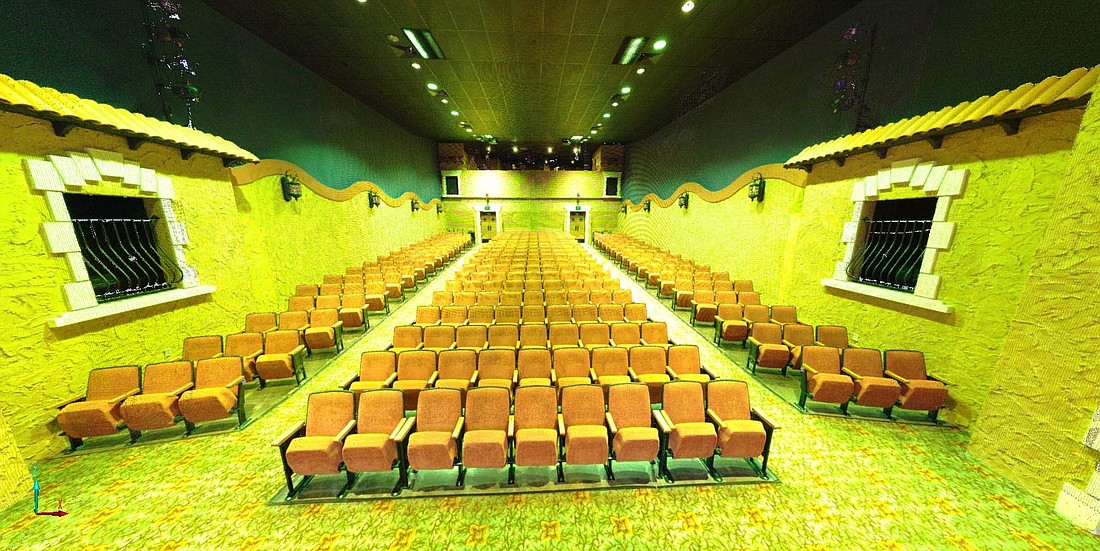- April 19, 2024
-
-
Loading

Loading

Advanced technology and students at Orange Technical College are pushing the Garden Theatre into the future of theater production.
Led by program director Alan Lynch, students in the Launch Site program at Orange Technical College used 3D laser scanning technology to create scans and data of the Garden Theatre, something that allows set designers tools to create more efficiently.
“What excites me most about this entire thing is that this is a partnership between a major education facility that’s pushing the boundaries of what secondary education can provide, and a regional theater that’s pushing the boundaries of what art can provide,” said Emily Russell, director of operations at the Garden Theatre. “Together, we can be the lead to really change the artistic product that Central Florida has to offer.”
Launch Site is a simulation training program geared toward training artists, animators and programmers to work in the simulation industry. Students from this program visited the theater in September to begin their work with
the 3D scanner, the FARO Focus 3D.
The scanner is a laser scanner, which uses tiny laser points to hit every section of the theater. The students planned out where to put the best locations for the scanner, scanned the theater and then merged the files together to create a 3D model accurate down to the millimeter.
It’s more than just a fancy rendering of the theater. The technology will benefit operations at the theater greatly. Currently, the theater uses computer-aided drafting to create set designs based on the original drawing of the theater. The drawing of the theater requires directors and set designers to measure the area they would like to use by hand and then enter those measurements into the drafting program to create a set design. It’s a process that is successful but also labor-intensive.
The laser camera takes some of the work out of the process, allowing for the designer to see a down-to-the-millimeter accurate representation of what the theater actually looks like. The model offers more benefits to the theater than just reducing labor, though.
“What this does to help the designer is that it provides a level of accuracy and a level of detail that you do not typically find in drawings like this,” Russell said.
The data allows designers to see beyond the physical measurements and shape of the room and to see features to consider during design, such as curtains that could change the way the audience looks at the set. The models also are helpful to set designers who do not live locally because they enable them to design the entire set remotely.
Designers have the option of using the data from the laser scanner for measurements or bringing the data into a 3D modeling animation program, where the designer is even able to build his or her set virtually in the program.
“Think of it as a diorama model that an architect would have to build a building,” Lynch said.
Lynch hopes that the students in the Launch Site program will even be able to create virtual sets for the theater.
Andrew Fowler, one of the students who participated in the project, was excited that the project brought together the new and old.
“The theater has been there for quite some time,” Fowler said. “To have an old theater bring in something that’s new — new technology — just shows that old things may never die, because the new things keep them alive.”
Contact Jennifer Nesslar at [email protected].